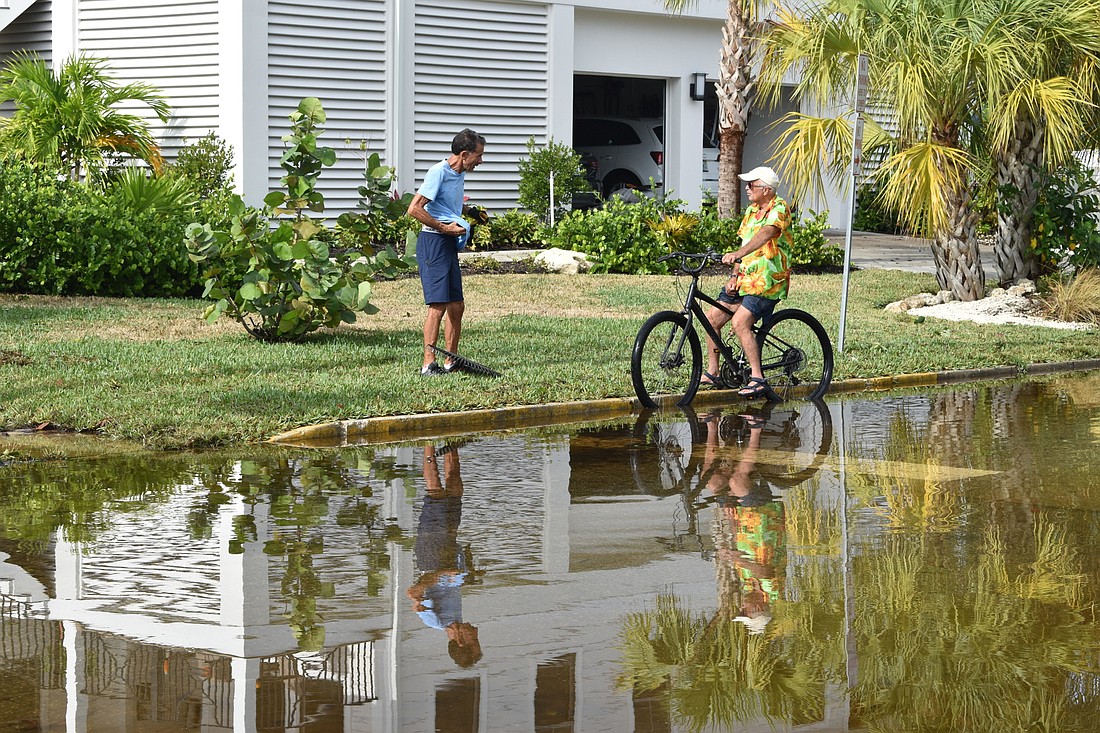- May 21, 2025
-
-
Loading

Loading

Longboat Key is shifting in the way it holds reserve funding and how it calculates its potential use.
Commissioners recently voted to change the town’s target levels in the general fund, moving away from a system of a broadly defined reserve to one that assigns money to three funds, each with a range of minimums and maximums:
The new recommended target range is between 32% (120 days) and 48% (180 days) of total budgeted expenditures.
“We’re increasing the amount of days that we will keep at a minimum because we’re a coastal barrier island, because we’re susceptible to hurricanes and red tides and other types of events,” Town Manager Tom Harmer said. “Historically, we’ve been building up our fund balance, which is good. Now, we’re formalizing that to make sure we keep aside enough to help us through most circumstances that could impact us.”
The changes take effect so the town can use the new criteria for the end of the current fiscal year and for the next fiscal year starting in October. The last time the town made changes to its reserve policy was in 2013.
Harmer said the reason the town made changes now is because staff has started the budgeting process for fiscal year 2022, which runs from Oct. 1, 2021-Sept. 30, 2022. The approval process begins in early summer, with formal adoption in September.
May 18 marks the Town Commission’s first special workshop meeting to discuss the budget.
Harmer explained to commissioners his responsibilities if the town fails to meet the new budget criteria.
“If some reason during the budget process, we don’t meet that or can’t meet that, then it says I’m obligated to report back to the commission and I’m also obligated to come up with a plan to restore within two budget cycles,” Harmer said.
Before commissioners voted to approve the changes, District 1 Commissioner Sherry Dominick asked whether the town would be better served in expanding the restoration period for a missed goal to three years instead of two.
“If we have an easier standard to meet, are the better optics better for us than if we say two years and we have a problem with that?” Dominick asked Harmer.
“Ultimately, these are Town Commission policies set by the Town Commission, so they’re not statutory,” Harmer said. “They’re just best practice financial policies.”
Harmer said the new financial standards are not required by law, but the town's credit rating would suffer if it borrows money instead of relying on savings to fund a project.
Longboat Key scored a 25 out of 40 on a Government Finance Officers Association risk assessment model. It means the town faces a moderate to high level of risk for unforeseen expenses. The score means the town should consider adopting a target amount of reserves significantly higher (between 26-35%) than the GFOA recommended minimum.
“Now we have about $9.6 million in reserves and about $7 million of it was in the unassigned reserve tank, which seemed extraordinarily high and maybe overly flexible, so the task was to put to figure out how to make this make more sense,” Mayor Ken Schneier said.
The town identified three prime risk factors having the largest impact on town reserves:
The town ranked and scored extreme weather events as “very important.” Tropical storms or hurricanes hit or brush Sarasota every 2.18 years, according to hurricanecity.com. The state estimates a direct hurricane hit on the Sarasota area once every 9.25 years.
“There always could be like the worst-case scenario, a direct hit of a Category 4 or 5 hurricane, that you’re never going to be completely financially ready for, but this really does position ourselves well because as the commission looks at priorities and things they know are out there, they have limited resources,” Harmer said. “This sets aside reserves before they get to that discussion enough so that we protect the town for the unknown.”
Last year marked an example of revenue volatility when the town’s property values decreased for the first time since 2013. For fiscal year 2021, the town budgeted about $12,398,165 in property tax revenue. The total makes up about 76% of the town’s total revenue of $16,318,241.
“We don’t know yet what property taxes will be,” Harmer said. “Last year, we were surprised. This year, it appears we won’t be surprised. It appears the market has been very positive, but we were surprised by that change.”
Other risk factors included expenditure volatility, liquidity, other funds’ reliance on the general fund, growth and capital projects.
“As we look at these things and when we look at our options in terms of reserves and the like, we shouldn’t lose sight of the fact of how fortunate we are with these kinds of problems that our reserves are a little higher than we really know what to do with at this point, knock on wood, but it’s a problem a lot of municipalities would love to have,” Schneier said.